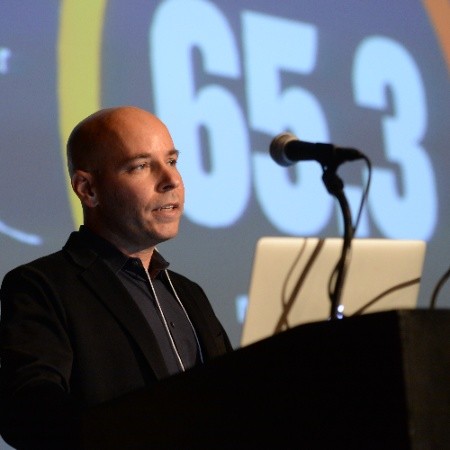If you thought that vending machines that dispense nothing but baby carrots are the latest green innovation in this field, we’ve got news for you. There’s a vending machine that is far more progressive and innovative. It provides you with a “fun way to save the earth” and doesn’t even want any money in return. Intrigued? Welcome to the world of Swap-O-Matic.
The Swap-O-Matic is not a regular vending machine. While a conventional vending machine helps us to buy stuff in places and times where other alternatives are out of reach, the Swap-O-Matic offers a swapping experience, enabling users to donate and receive items, instantly and for free. According to its website, the Swap-O-Matic tries to remind us that “reusing and recycling can be just as fun as buying something new.”
Here’s how it works: The machine has a touch screen with three options: swap, donate or receive. It works on a point/credit system, where you earn a credit for every item you donate and ‘pay’ a credit for every item you take. New users receive 3 credits to start after entering their email address. It’s a very easy and user-friendly system as you can see from the video below. It also includes features to prevent misuse or stalemate of the system.
Swap-o-matic - Promotional Video #1 from Lina Fenequito on Vimeo.
The Swap-O-Matic was designed and created by Lina Fenequito, a New York-based designer, who started working on the first version of the machine while she was a graduate student at Parsons School of Design. The other people on the team behind the machine are Rick Cassidy, an Electronic Engineer and Ray Mancini, a Visual Designer. Together they present what they describe as a vehicle for recycling and reusing, as well as a message against the ever-growing consumption in our society.
Fenequito explains that the roots of her personal interest in promoting sustainable living and responsible consumption of resources stem “from my avid traveling in my childhood which opened my eyes to the disparity in lifestyles of myself and my fellow Americans to those in different cultures around the world.” Later on, while working as a youth coordinator for a youth outreach program in Chapel Hill, NC, she had the chance to learn more about the impacts of these issues back home. Working with many inhabitants of low-income housing projects, she began to connect the dots between the effects of jobs lost to cheaper overseas labor and the widening the gap of the rich and poor in American communities. She describes how she realized her relationship with consumer culture “to be more than a personal one, but one that effected many others, on a massive global scale.”
These influences are reflected in the Swap-O-Matic, which is supposed to be not just a fun way for people to reuse and recycle, but also a stimulator to rethink about our consumption culture and the inefficient use of resources. This is of course not the first platform to do it – the swapping space has grown tremendously and became an important part of the new green consumption culture, with websites like swap.com and Freecycle.
Right now there’s one machine and it is located at Ample Hills Creamery in Brooklyn, NY. In the past it was located in other locations in New York, such as Launch Pad Brooklyn, the Parsons School of Design Gallery and Lower East Side Girls Club. The fact that this is a machine with a specific location may limit its flexibility or its convenience, as you can swap only with what’s currently in it and you need to go to the place where it is located to actually do it. At the same time, the machine’s physical existence provides some advantages and not only disadvantages comparing to its online swapping peers. Just think of the potential of such a machine in your working place - if it’s an office, colleagues can swap stuff in a much more meaningful way compared to an online swap with someone they don’t really know. This sort of interaction can provide an opportunity to create an added value to the swapping process and get people to think how the alternative to consumption can be easy, fun and even more beneficial.
This is certainly more than just an art project and if it finds the way to reach companies and organizations around the country, it might meet its goal of promoting “a shift in culture away from an emphasis on unconscious consumption towards a more sustainable way of life through reusing and trading.” In the meantime, if you’re in Brooklyn, come to Ample Hills Creamery to enjoy a good ice cream and see how the green future of vending machines can look like.
[Image credit: Swap-O-Matic.com]
Raz Godelnik is the co-founder of Eco-Libris, a green company working to green up the book industry in the digital age. He is an adjunct faculty at the University of Delaware’s Department of Business Administration, CUNY and the New School, teaching courses in green business and new product development.

Raz Godelnik is an Assistant Professor and the Co-Director of the MS in Strategic Design & Management program at Parsons School of Design in New York. Currently, his research projects focus on the impact of the sharing economy on traditional business, the sharing economy and cities’ resilience, the future of design thinking, and the integration of sustainability into Millennials’ lifestyles. Raz is the co-founder of two green startups – Hemper Jeans and Eco-Libris and holds an MBA from Tel Aviv University.














